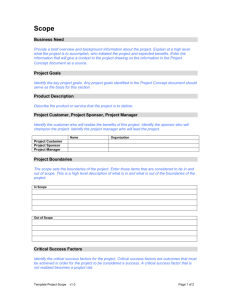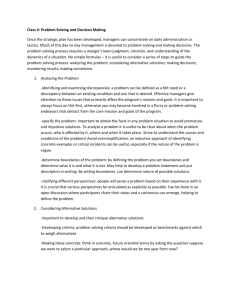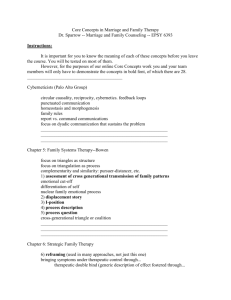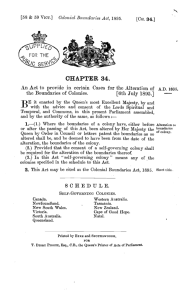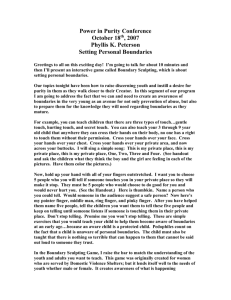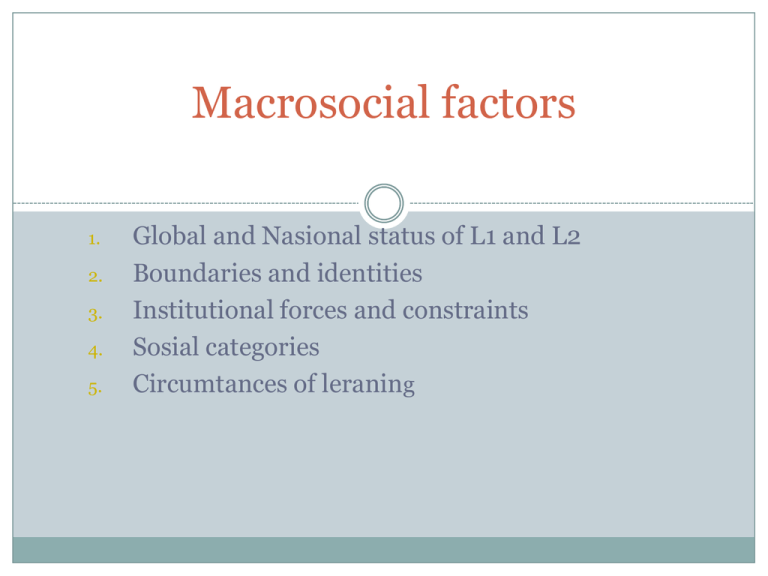
Macrosocial factors
1.
2.
3.
4.
5.
Global and Nasional status of L1 and L2
Boundaries and identities
Institutional forces and constraints
Sosial categories
Circumtances of leraning
1.Global and national status of L1 and L2
Language have power and status at global and
national levels for both symbolic and practical
reasons.
Symbolic funtions of Language :
Political identification and cohesion
National Unity
The process of nation-building
Practical function of language
L2 have also served political functions in times of
conquest and empire-building
Language have Commerce and technology transfer
function
Economic and military power
2.Boundaries and identities
Neither to create or reinforce national boundaries but
linguistic boundaries often also exist within or across
national borders,
Unification
Aculturation
Motivation
John schumann in his aculturation model :
Dominance of one group over the other.
A high degree of segregation between groups.
Desire of the leaners group to preserve its own lifestyle.
3.Institutional forces and constraints
Social control
the form of official and unofficial policies that
regulate which language is to be used in particular
situations
Determination of access to knowledge
Access to education may also limited for minority
language speakers, since entry to those institutions
of requires applicants to display competence in
proper language usage.
Linguistic privilege or discrimination
4.Social categories
Different social categories frequently experience different
learning conditions, and different attitudes or
perceptions from within both native and target language
communities. There fore, this level we need to consider
in the marosocial context of SLA
Age
Sex
Ethnicity
Education level
Occupation
Economic status
5.Circumstances of learning
Children’s experiences with the families into which
they are born
The communities to which they belong
The cultural environment within which they live
Field-dependent and field-independent
Cultural-based learning strategies
Informal versus formal learning
6.Conclusion
No individual factors in the macrosocial context of
SLA can be isolated from others. Circumtances of
learning are related to the nation that the leaner lives
in and its history, culture, and geopolitical position,
and to social and economic categorizations within
the society, which in turn are related to historical,
institutional, and political forces and constraints, all
of which are related to and reflect or determine the
status of the language involved. All of these factors
powerfully influence the microsocial context of
learning.



